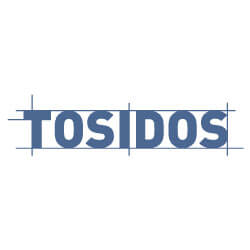Introduction to the Basics of a (Balanced) Diet
In our introductory article, we emphasized the importance of a well-planned (balanced) diet.
In our introductory article, we emphasized the importance of a well-planned (balanced) diet. Before starting to plan a suitable diet for the upcoming L'Etape Slovenia challenge, it makes sense to first get to know (or revisit) the basics of nutrition. Today's article focuses on understanding macronutrients, namely carbohydrates, proteins, and fats.

Macronutrients provide energy or kilocalories
Simplified, macronutrients provide energy or kilocalories (hereinafter referred to colloquially as "calories"). Fats provide the most calories per gram, approximately 9 calories. Next are carbohydrates and proteins, each providing about 4 calories per gram. In the context of energy contribution, it is also worth mentioning alcohol, which contains about 7 calories per gram. To illustrate what this means in practice, let's look at two examples.
To compare the energy contributions based on the composition of foods, let's compare two foods. The first food is rice, which is mainly composed of carbohydrates (Figure 1). The second food is olive oil (Figure 2), which consists almost entirely of fats. Per 100 grams, olive oil contains significantly more calories. In practice, we often give the example that approximately one tablespoon of oil contains the same number of calories as 100 grams of cooked rice (Figure 1 shows the values for raw weight!). This example clearly shows that a larger quantity of a particular food on the plate does not always mean more calories. Therefore, it is even more important to understand what this means in practice, especially if your goal for the upcoming challenge is also related to body weight.
You can imagine your energy reserves as a glass. The rim of the glass represents the "limit" for maintaining body weight. ALL macronutrients (including alcohol) are what can raise this limit (a long-term raised limit would mean weight gain), maintain it, or lower it (weight loss). In the context of optimizing body weight and preparing for a demanding activity, the ratio of macronutrients should not be overlooked.
For example, in weight loss, we want to emphasize adequate protein intake (and adjusted intake of the other two macronutrients), as otherwise, we could lose more muscle mass, which we do not want. At the same time, this example again highlights the importance of all pillars, especially strength training and sufficient sleep.
In the context of optimal preparation for the L'Etape Slovenia challenge, we want to execute our training as well as possible, as this is the only way we can make good progress. Therefore, it is important to ask the following question when looking at the glass example: How can I most effectively fill my energy reserves for my training needs?
We will answer this question in the next article. A meaningful summary of today's article would be that only by knowing the basics can you effectively plan your diet. Additionally, knowing the basics can contribute to a more humane and less stressful approach to nutrition.












































